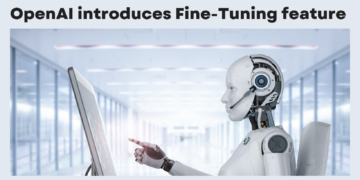The realm of technology is evolving at an unprecedented pace, and Gartner’s latest forecast for worldwide IT spending in 2024 sheds light on the trends that will shape the industry. With a projected 8% increase in spending, reaching a staggering $5.1 trillion, organizations are gearing up for transformative shifts. Let’s look at the key insights provided by Gartner, exploring the driving forces behind IT spending growth and unveiling the top strategic technology trends for 2024.
IT Spending Landscape
In the dynamic landscape of IT spending, Gartner’s forecast reveals a promising 8% surge in 2024, reaching $5.1 trillion. While generative AI (GenAI) is not yet a significant player, broader investments in AI are steering the growth. John-David Lovelock, a Distinguished VP Analyst at Gartner, highlights that GenAI’s impact on spending will only become tangible in 2025. This period, however, serves as a crucial incubation phase for organizations to fine-tune their AI strategies.

Software and IT Services Growth
The software and IT services segments emerge as key players, experiencing double-digit growth in 2024, primarily fueled by increased cloud spending. Global spending on public cloud services is anticipated to surge by 20.4%, a trend attributed to both cloud vendor price hikes and heightened utilization. This emphasizes the critical role cloud technologies play in shaping the IT spending landscape.
Devices Spending Rebound
After facing challenges due to inflation in 2022 and 2023, the devices market is poised for a modest rebound in 2024, with a growth rate of 4.8%. This signals a shift in consumer and business confidence, reflecting renewed interest in devices as integral components of the evolving IT ecosystem.
Cybersecurity’s Role in Software Segment Growth
One of the driving forces behind the growth in the software segment is the surge in cybersecurity spending. Gartner’s 2024 CIO and Technology Executive Survey reveal that 80% of CIOs plan to increase spending on cyber/information security. The increasing threat landscape propelled by AI demands a robust cybersecurity infrastructure, making it the top technology category for increased investment.
Top 10 Strategic Technology Trends for 2024
As organizations navigate the evolving technological landscape, Gartner identifies ten strategic technology trends for 2024. These trends encompass a wide array of advancements that promise to redefine the way businesses operate and interact with technology.
Democratized Generative AI
Generative AI (GenAI) is undergoing democratization, with massively pretrained models, cloud computing, and open-source initiatives making these models accessible worldwide. Gartner predicts that by 2026, over 80% of enterprises will have leveraged GenAI APIs and models, marking a significant shift in the democratization of knowledge and skills within enterprises.
AI Trust, Risk, and Security Management
The democratization of AI emphasizes the urgent need for AI Trust, Risk, and Security Management (TRiSM). This trend aims to provide guardrails for AI models, ensuring they do not spiral out of control and cause unintended negative consequences. Gartner predicts that applying AI TRiSM controls will enhance decision-making accuracy. TRiSM is expected to eliminate up to 80% of faulty and illegitimate information by 2026.
AI-Augmented Development
AI-augmented development leverages technologies like GenAI and machine learning to assist software engineers in designing, coding, and testing applications. This trend enhances developer productivity, allowing teams to meet the growing demand for software. By reducing the time spent on coding, engineers can focus on strategic activities, fostering innovation in software development.
Intelligent Applications
Intelligent applications, characterized by learned adaptation and autonomy, offer a foundational capability for dynamic user experiences. With 26% of CEOs citing talent shortage as a significant risk, intelligent applications become crucial in augmenting and automating work, addressing workforce challenges while dynamically adapting to user needs.
Augmented-Connected Workforce
The augmented-connected workforce (ACWF) strategy optimizes human worker value through intelligent applications and workforce analytics. By providing contextual guidance and support for everyday tasks, ACWF enhances workforce experience, well-being, and skill development. Gartner predicts a 25% reduction in time to competency for key roles through ACWF initiatives by 2027.
Continuous Threat Exposure Management
Continuous Threat Exposure Management (CTEM) takes a pragmatic and systemic approach to evaluate the accessibility, exposure, and exploitability of digital and physical assets. By aligning assessments with threat vectors and business projects, organizations can identify vulnerabilities and unpatchable threats, leading to a two-thirds reduction in breaches by 2026.
Machine Customers
Machine customers, or ‘custobots,’ represent nonhuman economic actors capable of autonomously negotiating and purchasing goods and services. Gartner predicts that by 2028, 15 billion connected products will behave as customers, generating trillions of dollars in revenues. Businesses must consider facilitating these algorithms and devices to stay ahead in the era of machine customers.
Sustainable Technology
Sustainable technology is a framework that uses digital solutions to enable environmental, social, and governance (ESG) outcomes. With concerns about energy consumption and environmental impacts, Gartner predicts that by 2027, 25% of CIOs will see their personal compensation linked to the impact of sustainable technology.
Platform Engineering
Platform engineering focuses on building and operating self-service internal development platforms. These platforms, created and maintained by dedicated product teams, aim to optimize productivity, user experience, and accelerate the delivery of business value. As organizations increasingly embrace platform engineering, it becomes a cornerstone in driving innovation and efficiency.
Industry Cloud Platforms
Gartner anticipates that by 2027, over 70% of enterprises will leverage Industry Cloud Platforms (ICPs) to accelerate business initiatives. These platforms, combining SaaS, PaaS, and IaaS services, provide tailored cloud solutions with composable capabilities. ICPs address industry-specific outcomes and offer organizations the flexibility to adapt to their unique needs.



























